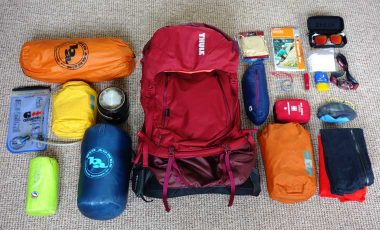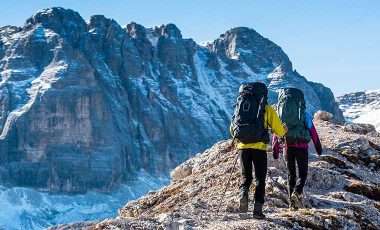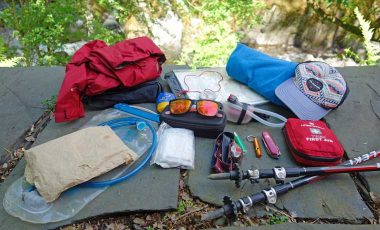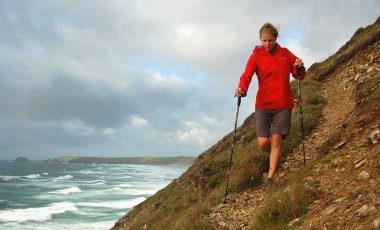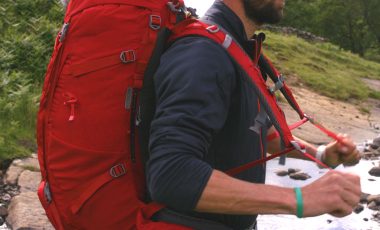It’s a funny one, learning how to pack a backpack. Surely you just shove it all in in order of the things you use least to most, right? Well, yes. To a degree. But there’s a little more to consider when packing for multi-day hiking and backpacking trips. When you’re carrying between 20 and 30 lbs (9 and 13.5kgs) on your back for days at a time, you want to make sure you’re as comfortable and stable as possible. This is where knowing how to pack a hiking backpack is key.
- A visual guide to packing your backpack for hiking
- Why it’s important to know how to pack a backpack correctly
- How to pack a backpack and what items to pack where
- More tips on how to pack a backpack
A visual guide to packing your backpack for hiking
Before you go any further, take a quick look at our short clip on what to pack for a multi-day hiking or backpacking trip, and how to pack it.
Why it’s important to know how to pack a backpack correctly
The more you go backpacking the better you’ll get at packing for it. You’ll start to learn exactly what you do and don’t need, and where best to place it in your pack.
If you’re packing a hiking backpack for the first time, however, the ‘chucking it all in’ approach will need some work!
The two main reasons for packing with thought and consideration are:
Comfort and stability
To ensure that you don’t put unnecessary pressure on your back and shoulders, the placement of heavy gear should be carefully considered. Wrongly placed gear can increase the outward pull of the pack on your shoulders and also alters the stability of the pack. An unbalanced pack can make negotiating challenging terrain much more difficult, increasing the risk of toppling over.
Convenience
Having easy access to your stuff is also essential. Imagine having to delve down to the bottom of your pack each time you need to take a drink, or look at your map. Time wasting, energy zapping and totally nonsensical. If you pack smartly then comfort and stability needn’t be compromised for the sake of convenience.
I adore my Thule Guidepost backpack (featured in the images). Not only is it incredibly comfortable and stable (when packed properly!), but it also has loads of storage options that make accessing all my gear super convenient.

How to pack a backpack and what items to pack where
Everyone packs different stuff for different seasons and locations. And if you’ve already done some multi-day hiking trips then you probably have a good idea of what you do and don’t need to pack.
However, for those looking for some guidance the below info will tell you what things to pack for a one or two night hiking trip, as well as how to pack it.
Here are the basics of how to pack a backpack for comfort, stability and convenience:
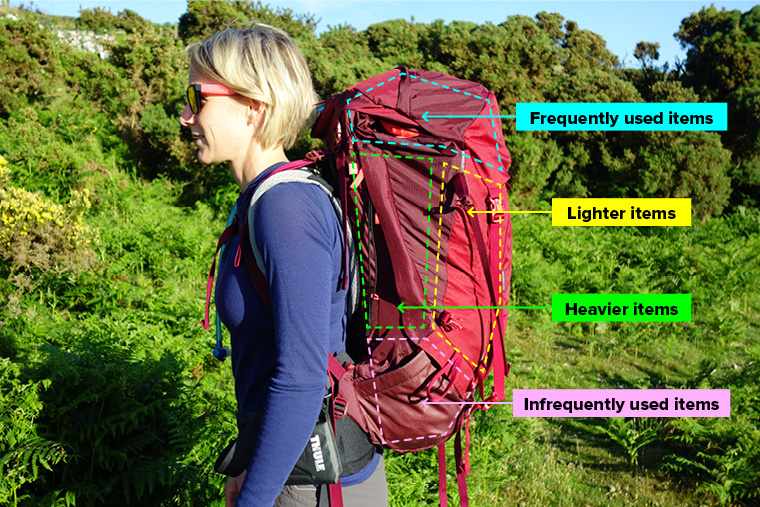
Share this image on your site
Frequently used items
Where should it go? In the top or side pockets (or belt pockets if you have them).
Why should it go there? For convenience.
What items does this inlude?
The stuff you use most often during the day should be very easy to access. Ideally these items shouldn’t be in the main compartment of your bag. But if they are, then make sure you place them at the top.
Lighter items
Where should it go? Further away from your back in the main compartment.
Why should it go there? For stability and comfort.
What items does this inlude?
Packing the light stuff away from your back allows space for all the heavy stuff to be stored close to your back.
Heavier items
Where should it go? Close to the centre of your back centrally in the main compartment.
Why should it go there? For stability and comfort.
What items does this inlude?
- Tent
- Cooking equipment (pot, gas, stove, bowl)
- Food (main meals)
- Water bladder
Placing the heavy stuff close to the centre of your back keeps the backpack’s centre of gravity close to your body. This prevents the weight from pulling you backwards and reducing the outward pull on your shoulders. It also helps reduce instability.
Infrequently used items
Where should it go? At the very bottom of the main compartment.
Why should it go there? For convenience.
What items does this inlude?
- Sleeping bag
- Sleeping mat
- Spare clothing (thermals, extra layer, underwear, socks, towel)
If possible, store things at the bottom of your pack that you are highly unlikely to use until you set up camp in the evening. At that point you’ll be emptying your backpack of most of its contents anyway, creating easy access to items that are awkward to get to.
Items you may want to pack on the outside of your backpack
Where should it go? In side pockets or clipped onto gear loops.
Why should it go there? For convenience, or because it doesn’t fit inside the pack.
What items does this inlude?
More tips on how to pack a backpack
By now you should have a pretty good idea of how to pack a hiking backpack. These extra little tips and tricks will help fine tune your packing systems even more. And once you’ve done it yourself a few times you’ll start learning exactly what suits you best.
01Explore the storage options of your backpack
Before you even think about putting anything in it, have a good investigate of your pack, especially if it’s new. You may find hidden pockets, useful gear loops or even inexplicable additions that look like they should be useful! Familiarising yourself with all the different parts of a backpack and their uses might clear things up for you.
02Lay everything out
Before you start putting items into your backpack, it’s really useful to gather up all your gear and lay it all out. That way you can visualise exactly what you’re packing, and also streamline your list if you need to.
03Bag stuff up
Put spare clothing and your sleeping bag into waterproof bags. This helps to keep things organised in the main compartment, as well as protecting them from getting saturated if you are hiking in areas of heavy rainfall. Using old plastic bags works just fine.
04Avoid packing unnecessary stuff
This is tougher than it sounds! And you’ll probably find that you take a least a couple of items you just don’t need, despite trying not to! If you’re unsure, try picturing yourself using the item in a likely scenario. Then try picture that same scenario without the item — can you get along without it?
05Line the inside of your pack
An alternative way of protecting your gear from wet weather is to line the inside of your pack with a large, heavy duty garbage sack.
06Tighten the compression straps
To limit load shifting and increase the stability of your load, be sure to cinch down all the compression straps on the outside of the pack. This keeps the whole thing as streamlined as possible.
07Avoid attaching too much to the outside
Certain items like poles and axes sit perfectly on the outside of a backpack. But just because there are a load of gear loops available to clip stuff to, doesn’t mean you have to use them! Aside from affecting the balance of your back, if they rattle, squeak or creak as you walk, you will soon go crazy!
08Re-pack if you need to
Once you’ve done your first pack, try your backpack on. If it feels unbalanced or too heavy in certain areas then it’s worth spending the time rearranging its contents. Any imbalances may not become apparent until you’re on the trail. So again, take the time to get it right before you get the miles in.
09Note the stuff you don’t use
When you come to unpack your backpack after your trip, take the time to look at each item you packed. Did you use it? If not, why? Do you need to take it next time? Whatever you decide, be sure to note it down for your next trip.
There’s certainly no right or wrong way to pack for a hiking trip. But knowing these basics will certainly help you on your way to figuring out how to pack a backpack that is perfectly suited to your gear, comfort and convenience.
Happy packing, happy backpackers!


